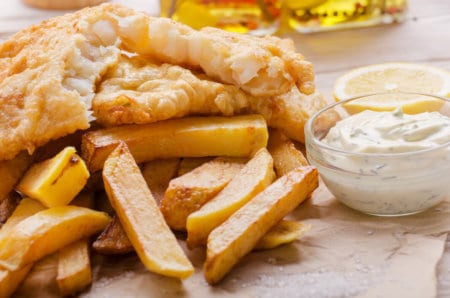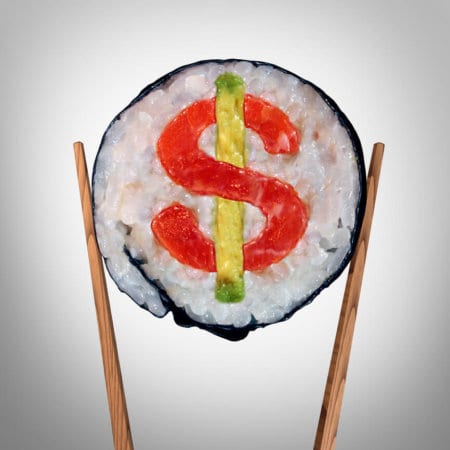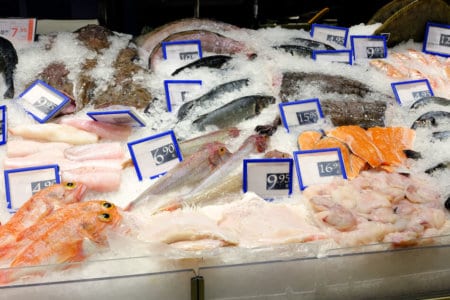Calculating cost of food: It is a fact – Food cost will make or break your restaurant. Therefore, we are bringing you a special feature about food calculations per dish, in this blog article.
In our recent blog, Recipe for Success, we shared the meaning of COGS, or Cost of Goods Sold. You understood the minute you saw the term. This is the cost behind the making of every one of your recipes. Perhaps that made you wince a little. Fear not, we’ll show you simple calculations to help you calculate your food costs to the dish and to the day.
Calculating Cost of Food: First Thoughts

This ingredient (COGS) in your restaurant accounting is absolutely Critical to your profit margin. But before we focus on the details, let’s explain why you are seeing an article like this instead of a general tax tips article like every other accountant in town is presenting. It’s because our services at Gavrilov & Co are specialized.
You see, at Gavrilov & Co Accounting and Tax Services, we are more than accountants to many of our clients. We are business advisors with 25 years worth of restaurant experience. And we put this experience behind the accounting numbers.
Thus, we will be bringing you more than tax tips. We’ll be bringing you some solid, practical advice in every-day language. In fact, think of this advice as the secret sauce for your success.
Calculations Instead of Frustrations
In brief, we have already let you know about a financial document the COGS or “Cost of Goods Sold.” Your COGS helps to formulate the total cost that goes into creating each delicious product you are selling.
In today’s blog, we want to go deeper into this cost of food calculation. We want you to think of COGS (Cost of Goods Sold) as the cost of all the ingredients and items inside the dishes on your restaurant’s menu. Then, counting up your profit per plate is not as difficult as it sounds. We do reiterate that the key to a successful restaurant is that the owner knows exactly what each plate of food cost.
Calculating the Cost of Food and A Fish Story: Case Study
Now let’s get practical. If you’re a restaurateur, then you know the drudgery that goes into the day-to-day operations. Your margins are thin. Your staff is resistant to change. One of your most important deliveries never showed up. These little irritants are just part of the restaurant business.
We know that you have to really work to find time to do all the calculations for the ingredients in your dishes. The math alone can seem daunting.
But, let’s just focus on the difference having this data can make to your bottom line. Let’s see how to calculate restaurant food cost percentage.
How The Food Cost “Math” Works at the Simplest Level

Here is how it goes. Let’s say you have a fish ‘n’ chips restaurant. Welcome to Walt’s Fish and Chips. Walt has his shopping list. For daily operations, he must buy the following supplies to be in business:
Fish
Potatoes
Malt vinegar
Ketchup and other condiments
Cabbage
Various vegetables
Frying oil
Flour
Assorted Spices
Now, don’t worry about Apple Pie or alternative dishes. Walt only serves fish, fries, and coleslaw, with a little tartar sauce. So, the Menu item selection is an entirely different matter. That’s a different blog. For now, we’ll focus on the food cost of your main dish.
And Walt is correct to have gotten out his little shopping list for this discussion. Food Cost is defined simply as “the amount that you spend monthly on ingredients.” Walt serves only halibut. And it costs him about $18 per pound.
He fillets the halibut in 3.5-ounce portions. That means he is getting roughly five portions per pound. Here comes a special Side Note:
Calculating Your Ideal Food Cost: An Important Side Note
There is a figure called the ideal food cost, which is the amount you have to charge to keep your food cost between 25 and 30 percent.
Divide the amount you pay for an ingredient by the amount for which you sell your item. Here’s the bad news. If the food costs more than 30 percent of what you sell it for, your business will probably fail.
Calculating the Cost of the Halibut

Therefore, Walt can look at his halibut through the lens of an accountant. If it costs 18.00 per pound, and he is getting 5 portions per pound. Then, it follows each portion costs him $3.60.
If he sells only fish and not fish ‘n’ chips, what would he have to charge for each portion of fish? Solution? In order to achieve a 30-percent ideal food cost, Walt would have to sell each portion of fish for approximately $12. ( 30 percent of $12 selling cost = $3.60 food cost) $12.00 may sound a little high for fish alone. So, to soften the blow, Walt offers chips with his fish!
Fish and Chips: Calculating More than Halibut
Now, Walt sells not just fish, but fish and chips. We can’t just forget the cost of chips. So to get his cost per dish, we need to analyze those.
- A 10-pound bag of good potatoes costs about $10. A good portion of potatoes is about 5 ounces. This means you get about three servings of fries from each pound of potatoes. That’s 32 portions per 10-pound bag. (10 lbs @ 16 oz per pound = 160 ounces or 32 servings.)
- Therefore, 32 portions cost you about $10. Then, each portion costs the restaurant $0.32.
- That means that the selling cost for each portion of potatoes should be $1.07.
Solution: So, you should be selling your one-piece fish ‘n’ chips for at least $11.07. You would probably adjust your selling price to $11.99.
Calculating Food Cost Plus: Beware!
Of course, nothing works out the way it should when there are so many variables. Our previous example only counted the fish and potatoes. There are other items to count from our list, like cabbage, condiments, and spices for coleslaw, etc. Each of these is also part of the meal cost and need to be analyzed and added.
Then, there are also considerations that may affect our costs such as waste and shrinkage, etc.
Calculating Food Costs and The Case of the Missing Fish
For example, Walt needs 200 pounds of fish a week because they are delicious. Typically he has no problem selling those 1,000 portions a fish within a week’s time.
A New Scenario: What Went Wrong?
Walt buys his 200 pounds, but his sous chef tells him he is out of fish on Thursday. Now, he must buy more fish. Now we are discussing the actual food cost, not the ideal. So Walt had to add another 50 pounds of fish to his inventory. That’s 250 pounds of fish Walt bought instead of the 200 pounds that he planned. That 50 pounds at $18.00 per pound means that $900.00 worth of fish is missing. That is your purchasing cost. The loss in terms of sales is almost three times that amount. That hurts! And on a continuing basis, your business could be bankrupt.
Calculating the Actual Food Cost and Fishing for Answers

And he was short of product two-and-a-half days before the end of the week. By looking at sales and portioning, Walt knows the missing pounds of fish were not sold.
So, where did the rest of the fish go? Likely, it went out the back door. This being the case, you would have to beef up security.
We don’t mean to cast aspersions, but that sous chef had a nice dinner party for a family gathering last week. We hear he served some fine halibut.
Terrific “Take-out” from this Blog:
Tie your food costs to the profit you make per plate, and you will begin to understand how much profit you make overall. This means, not only each day or week’s profit. We want you to be able to instantly see the profit on every plate of food listed on your menu at any moment.
Restaurant accounting demands that you focus on watching this number.

